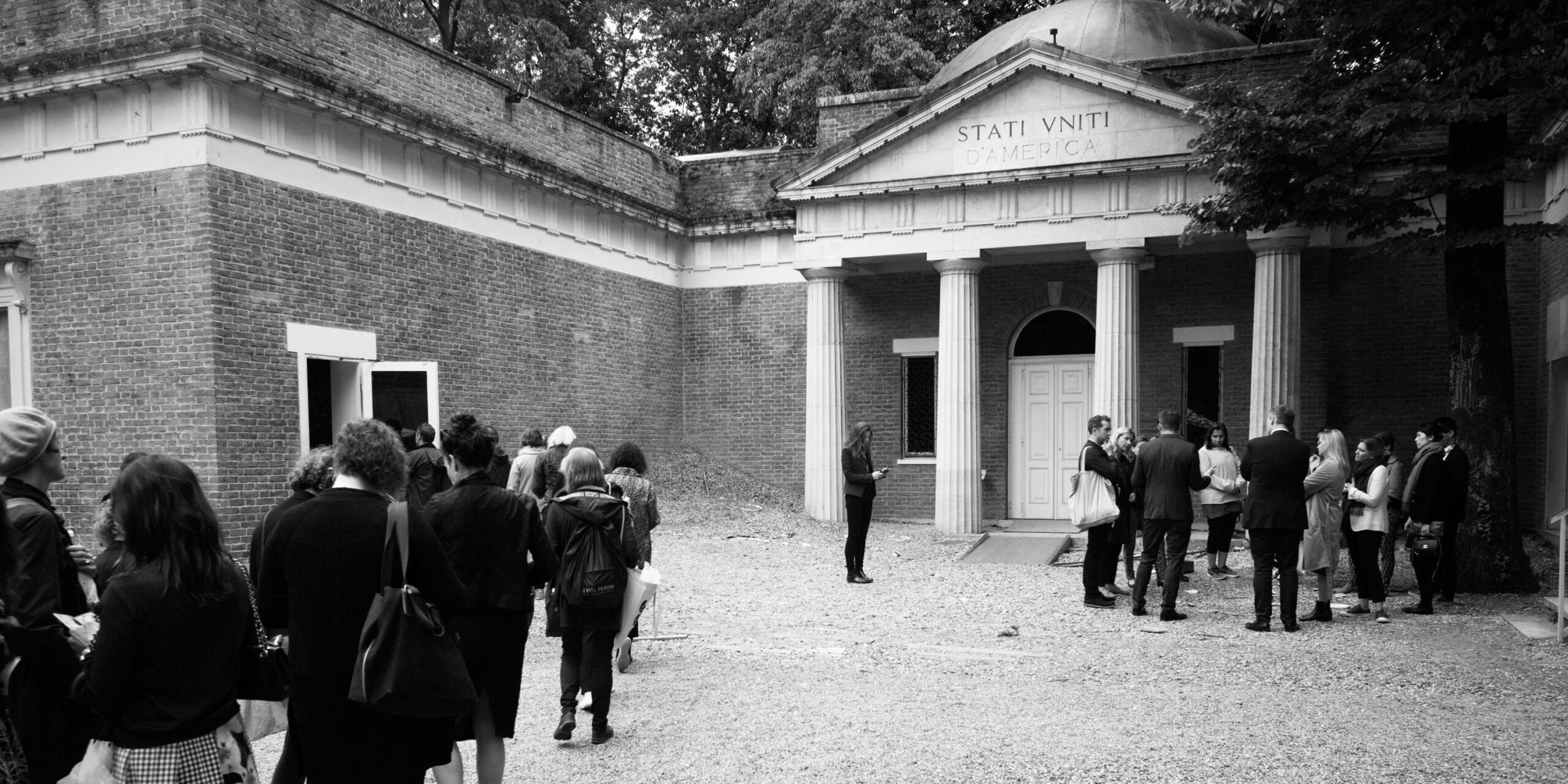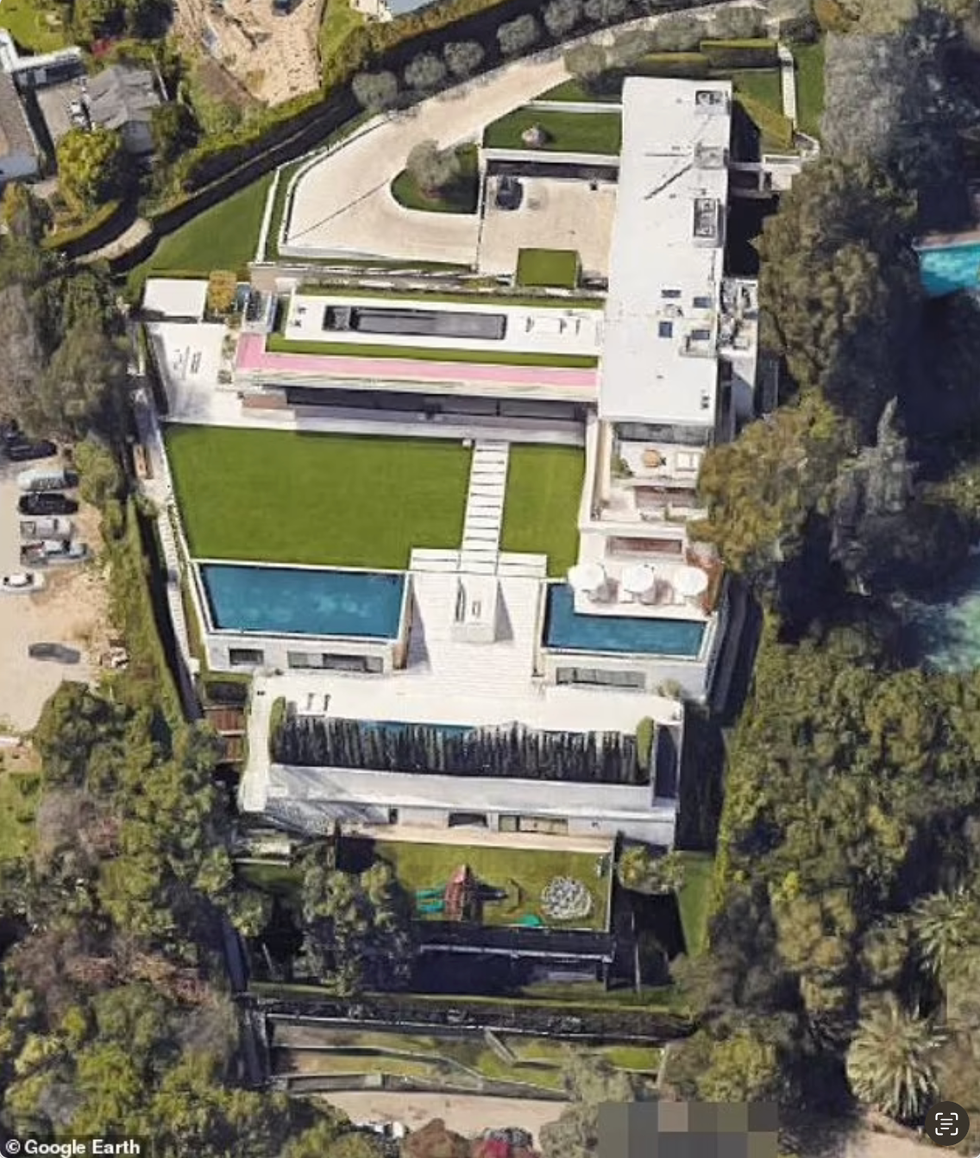
The application grant portal for the 2026 Venice Biennale, known as the Olympics of the art world, has opened to artists—months later than usual, and with new criteria written in language that looks like the now-familiar work of the current administration. With less time, the sudden passing of Koyo Kouoh, the curator of the 2026 Biennale, and a new definition of who the representative artist should be, will contenders be able to prepare an exhibit for the US pavilion? And, who should that artist be?
Being chosen to represent the US is an unparalleled career-advancing opportunity. The 130-year-old Venice Biennale, which takes place every two years, pits participating countries’ national pavilions against one another to win the prestigious Golden Lion award. Since it began in 1895, the US has taken part in every Biennale except for a few surrounding World War II.
But the cost, even at the best of times, is high. When artist Jeffrey Gibson was chosen to represent the US at the 2024 Biennale, he and his team had to raise $5 million. While winning artists are granted $375,000 by the US State Department Bureau of Educational and Cultural Affairs (ECA), $125,000 goes to the Peggy Guggenheim Collection in order “to provide the staffing, maintenance, and operations of the U.S. Pavilion during exhibit installation, display, and removal (approximately 7 months),” according to this year’s application documents. This means most of that $5 million had to be raised (the amount ranges year to year). Typically, funds are sourced from private donors and institutions.
In total, it’s a long and complicated process: Usually, an application is made by a trinity of artist, museum, and curator. The window to apply is months long; the ECA creates a Federal Advisory Committee in accord with the US Department of State to review applications, and a couple months later, a winner is announced. Which is why it caused alarm when Nate Freeman reported for Vanity Fair that the portal for the 2026 Biennale didn’t go live until Wednesday, April 30th, condensing the more typical 18-month window down to a tight 12 months. (The reason for the delay is not clear, and the State Department has not responded to a request for comment.)
Will a hopeful still be able to apply and pull together an exhibit in time for the 2026 Biennale? Most of the curators and gallerists we spoke with said yes, without a doubt. The timeline is not ideal, but anyone intending to apply is likely prepared. Long before the portal opened, institutions, artists and curators were no-doubt making moves to position themselves to win.
The question then becomes, who wants to represent American art on an international stage, right as arts funding is cut or redirected by the current administration. Earlier this month, the National Endowment for the Arts (NEA) pulled grants from hundreds of arts groups, according to NPR, after President Trump proposed cutting the NEA entirely. More recently, employees including senior leaders left the NEA en masse after being given the option to leave or retire early, through the Deferred Resignation Program, according to The Washington Post. Meanwhile, the assistant secretary role at the ECA role is vacant, and acting leadership is Darren Beattie, President Trump’s former speechwriter.
According to Freeman’s reporting, this year’s Annual Program Statement by the ECA looks different than past years’. Of the notable changes is an assertion that the program’s intent is to advance an “international understanding of American values by exposing foreign audiences to innovative and compelling works of art that reflect U.S. foreign policy and foster international dialogue on shared global challenges.” Also, a “site visit, at least once during the lifetime of an award, may be conducted by Department of State personnel. The site visit is conducted to gather additional information on the recipient’s ability to properly implement the project.”
“Within these conditions, should one go ahead and propose an artist?” says Cecilia Alemani, director and chief curator of High Line Art. “The intervention of the government with the content of the artist’s presentation is there where it hasn’t been in the past.”
On top of this is the recent and sudden death of Koyo Kouoh, just before she was supposed to announce the theme and title for the 2026 Biennale. Beyond the loss of an important figure in the art world—who would have also been the first African woman to curate the Venice Biennale—the implications of her passing for the next Biennale are unclear, and no statement has yet been made, according to the New York Times.
And yet imagining a Venice Biennale without a US representative at the national pavilion seems unimaginable. So is the idea that an artist wouldn’t want the chance to comment on art in America, given the platform at the Biennale.



